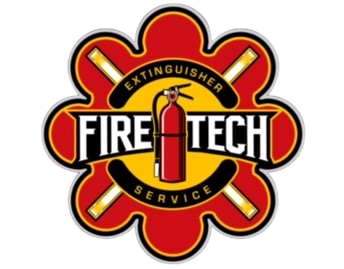Fire Instructions

WHAT IS FIRE?
To have a fire, there must be three elements: Fuel: something that will burn heat: enough to make the fuel burn Oxygen: Air. All three elements must be present simultaneously to have a fire. Fire will burn until one or more elements are removed and then go out. In Case of Fire, Remember the Three A's:
- ACTIVATE the building alarm system or notify the fire department by calling 911. You can also have someone else do this for you.
- ASSIST any persons in immediate danger, or those incapable on their own, to exit the building without risk to yourself.
- Only after these two are completed should you ATTEMPT to extinguish the fire.
"SHOULD I TRY TO FIGHT THIS FIRE?"
BEFORE you begin (or even consider) fighting a fire:
- Call the Fire Department (Dial 911).
- Make sure the building is being evacuated.
- Determine whether the fire is small and is not spreading.
- Confirm you have a safe path to an exit not threatened by the fire.
- Know how to use a fire extinguisher.
NEVER fight a fire if even one of the following is true:
- The fire is spreading beyond the immediate area where it started or is already a large fire.
- The fire could block your escape route.
- You are unsure of the proper operation of the extinguisher.
- You doubt that the extinguisher you are holding is designed for the type of fire at hand or is large enough to fight the fire.
DIFFERENT CLASSES OF FIRES:
There are four classes of fires. All fire extinguishers are labeled, using standard symbols, for the classes of fires on which they can be used. A red slash through any of the symbols tells you the extinguisher cannot be used on that class of fire. A missing symbol only tells you that the extinguisher has not been tested for a given class of fire but may be used if an extinguisher labeled for that class of fire is unavailable.
TYPES OF FIRES:
- CLASS A - Ordinary combustibles such as wood, cloth, and paper.
- CLASS B - Flammable liquids such as gasoline, oil, and oil-based paint.
- CLASS C - Energized electrical equipment, including wiring, fuse boxes, circuit breakers, machinery, and appliances.
- CLASS D - Combustible metals such as magnesium or sodium.
ONLY FIGHT A FIRE IF...
- Suppose the fire is small and contained. The time to use a fire extinguisher is in the early, or incipient, stage of a fire. Once the fire starts to grow or spread, it is best to evacuate the building, closing doors or windows behind you.
- Suppose you are safe from toxic smoke. If the fire produces large amounts of thick, black smoke or chemical smoke, it may be best not to try to extinguish it. Neither should you attempt to extinguish the fire in a confined space. Outdoors, approach the fire with the wind at your back. Remember that all fires will produce carbon monoxide, and many will produce toxic gases that can be fatal, even in small amounts.
- Suppose you have a means of escape. You should always fight a fire with an exit or other means of escape at your back. If the fire is not quickly extinguished, you need to be able to get out quickly and avoid becoming trapped.
- If your instincts tell you, it's OK. If you do not feel comfortable attempting to extinguish the fire, don't try to get out and let the fire department do its job.
FIGHTING SMALL FIRES ON THE JOB.
Workplace fire extinguishers should be placed conspicuously and within easy reach to access quickly while a fire is still small. Federal regulations require that employers who provide portable fire extinguishers in the workplace also provide training for their use. Used properly, portable fire extinguishers can save lives and property by putting out a small fire in the workplace or containing one until the fire department arrives. All employees must be familiar with the proper use of portable extinguishers and know when and when not to use them.
In the event of a fire, employees should respond in accordance with their company's emergency preparedness plan. Most employees will evacuate. Certain trained and designated employees will evaluate the fire scene and use a fire extinguisher to fight the fire if the fire is small and conditions are reasonably safe. All employees will evacuate if the fire is large or conditions are unsafe.
USING AN EXTINGUISHER? REMEMBER P.A.S.S.
Always keep your back to an unobstructed exit, stand six to eight feet away from the fire, and follow the PASS (Pull Aim Squeeze Sweep) four-step procedure:
- PULL the pin - This unlocks the operating lever and allows you to discharge the extinguisher. Some extinguishers may have other lever-release mechanisms.
- AIM low - Point the extinguisher nozzle (or hose) at the base of the fire.
- SQUEEZE the lever above the handle - This discharges the extinguishing agent. Releasing the lever will stop the discharge. (Some extinguishers have a button instead of a lever.)
- SWEEP from side to side - Moving carefully toward the fire, keep the extinguisher aimed at the base of the fire and sweep back and forth until the flames appear to be out. Watch the fire area. If the fire re-ignites, repeat the process.







